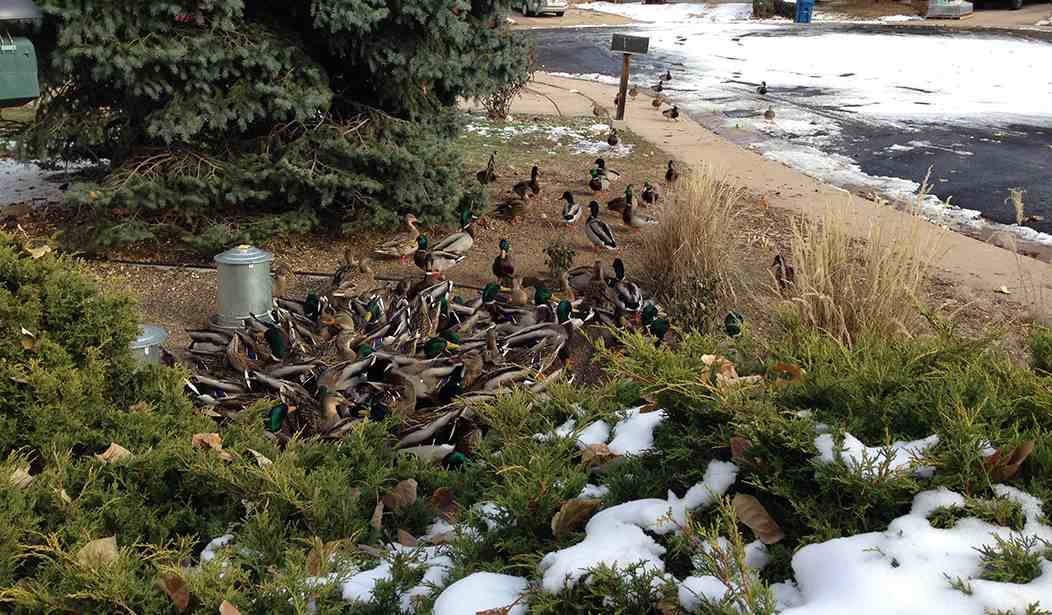I've written quite a bit on the differences between urban folks, especially urban "environmentalists," and the differences between those folks and those of us who actually live out in the environment, which in my younger days, we called "the country." One of the hallmarks of rural life, of course, is our interactions with our neighbors, especially the non-human ones. Here in the Great Land of Alaska some of those non-human neighbors are pretty formidable, including bears and moose, but we're not unique in that; bears and moose are found in many places across the northern tier of the United States and in the mountains of places like Wyoming and Colorado, where you can add elk to the mix.
But it is of smaller critters that I write at the moment. My mother always thought that, if humans ever disappeared from the planet, raccoons would take over as the next intelligent species, and she made a good argument for it; raccoons are smart, their front paws are very nearly hands, and they are great problem-solvers; my Dad fought a constant arms race with the local raccoons that required him to continually come up with new ways to secure their bird seed. And now, we see a woman in Poulsbo, Washington, has been feeding the local raccoons, and things have, well, gotten out of hand.
A woman in Poulsbo had to call 911 after nearly 100 hungry raccoons surrounded her home.
— Sky News (@SkyNews) October 8, 2024
The woman had been feeding the raccoons since the 1980s, but in recent weeks their numbers exploded, and she was forced to call the police ⬇️ https://t.co/PvZWCPQdD4 pic.twitter.com/ARagmcE22E
There's a cautionary tale in that. In my Allamakee County, Iowa youth, my parents ran a couple of bird feeders, and as I mentioned, one constant battle was keeping raccoons from emptying then nightly, a continual annoyance - although for some time Dad had a pet raccoon who would tap in the kitchen window in the evenings, and Dad kept a supply of cheap hot dogs around to put out for him.
My wife and I continued the practice of running a bird feeder, and when we lived in Colorado, we kept a feeder in the front yard of the house our kids grew up in, to bring in the constant stream of chickadees, nuthatches, and house finches. But then a pair of mallards showed up, so we bought some cracked corn to put down for them - and then they started bringing their friends, with predictable results. Next thing you know - see the image above - we became something of a local attraction, with people coming around from all over the city to see the hundred or so mallards that would drop in morning and evening to hoover up the feed. My Dad commented once, "If you had a really good pellet gun, there are a bunch of good dinners there," but we were living in town then, so that probably wasn't a good idea.
We tapered off the feeding, eventually moving back to just the traditional bird feeder, and in time the ducks dispersed. It was kind of fun while it was happening, but it was the one time we got a little carried away.
We're still running bird feeders here in the Great Land, where you have to be judicious to keep them out of the reach of bears and moose. But it's worth it; we enjoy having birds around. They are like little sparks of color and sound, and they add a lot to our day. But recently we’ve had a newcomer, and he hasn’t come around for sunflower seeds, suet, and millet. The newcomer is a Northern Shrike, and he’s looking hard at our chickadees and nuthatches.
Shrikes are interesting. We’re all familiar with the more usual birds of prey, those being eagles, hawks, falcons, and owls. We've had them around, too - recently we had a Cooper's Hawk hanging around for a while. But shrikes are unlike them, as they are Passeriformes – perching birds – and lack the strong feet and talons of hawks, owls, and so forth. Instead, they have pretty typical little perching bird feet, but they do have a sharp, hooked bill with which to kill mice, big insects, and other birds, even up to their size. Their habit of storing prey on thorns or stuck in the crotch of a tree branch has earned them the nickname “butcher bird.”
Our local fellow makes regular passes at the feeding birds, although we’ve yet to see him catch one. Some people may not like that, but I’d point out that it is, after all, a bird feeder, the shrike is a bird, he has to earn a living too, and after all his kind were here before we were. So we’re content to have him around.
See Related: Abandoned Baby Walrus Finds New Home With Alaska's SeaLife Center
Pennsylvania Custard Shop Discovers Stowaway Groundhog Stuck Inside Arcade Claw Machine
Having critters for your neighbors certainly isn't restricted to rural dwellings. The duck story above took place while we were living on a quiet cul-de-sac in a suburb of Denver, long before we moved north. When I was working in Silicon Valley, I had a ground-floor apartment next door to the work site and kept a feeder going for all the local California birds, some of which I hadn't seen before. It's a fun hobby, if managed carefully, and can bring many hours of enjoyment. And one thing about having gray jays, chickadees, nuthatches, juncos, and redpolls for neighbors - they don't gossip, which one can't always say about human neighbors.














